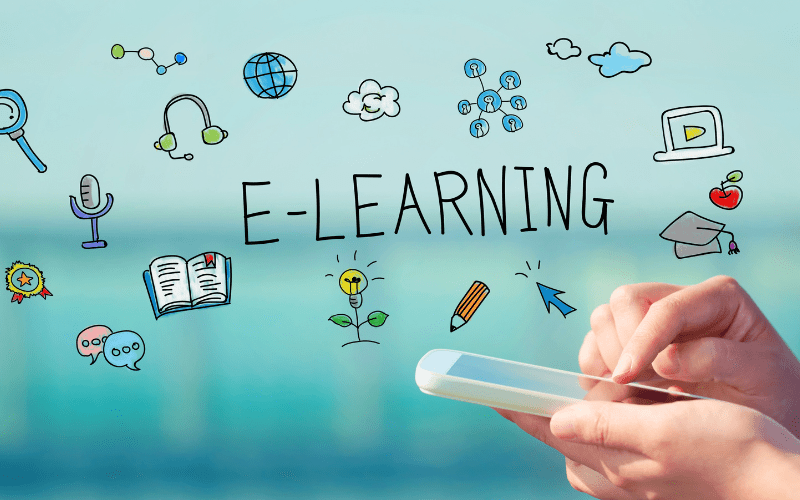
3D animation for e-learning
E-learning is one of the most effective and engaging ways to learn new skills and concepts. The rise of 3D animation has made it easier than ever to create rich, interactive experiences that captivate learners and help them process and retain information better. Discover why incorporating 3D animation in your e-learning courses can help boost learner engagement and engagement with your content.
What is 3D animation?
3D animation is the process of creating three-dimensional images on a computer. 3D animation is often used in movies, games, and cartoons. The process of creating a 3D animation can also be divided into three steps: modeling, rigging, and animating.
Modeling is the process of creating the three-dimensional models that will be used in the animation. Additionally, this step involves shaping and texturing the models.
Rigging is the process of attaching joints to the models so that they can move. This step also involves adding bones to the models so that they can be animated.
Animating is the process of moving the models and making them come to life. This step involves setting keyframes and tweening between them.
The benefits of using 3D animation in e-learning
There are many benefits of using 3D animation in e-learning. Three-dimensional (3D) animation can help make learning more engaging and interactive for learners. Additionally, it can also create a more realistic and lifelike experience that can aid in memory recall and understanding complex concepts.
When used effectively, 3D animation can be an excellent tool to support e-learning goals and objectives. Some of the specific benefits include:
• Engaging learners: 3D animation can help to capture learners’ attention and keep them engaged in the content. The use of movement, color, and sound can all help to hold learners’ interest and keep them actively involved in the learning process.
• Reinforcing concepts: The lifelike experience that 3D animation provides can help learners to better retain information and understand complex concepts. Seeing how something works in a three-dimensional space can often be more helpful than reading about it or seeing it represented in two dimensions.
• Supporting different learning styles: Different learners often have different preferences for how they like to learn new information. Some may prefer visual aids while others may prefer hands-on learning experiences. By using 3D animation, e-learning courses can offer a variety of ways for learners to engage with the content, supporting different learning styles.
• Accessible from anywhere: E-learning courses that use 3D animation are not limited by location – they can be accessed from anywhere with an internet connection. This makes them highly accessible to learners no matter where they are located.
The challenges of using 3D animation in e-learning
When it comes to e-learning, 3D animation has a few potential challenges. First, creating high-quality 3D animations can be time-consuming and expensive. Second, some learners may find 3D animations difficult to follow or understand. Finally, using too much animation in e-learning can make a course feel “cartoonish” and less serious.
How to use 3D animation in e-learning
3D animation can be used in a number of ways to enhance e-learning. It can be used to create engaging and interactive content, or to simply add an extra layer of visual interest. When used effectively, 3D animation can help make complex topics more understandable and can make learning more enjoyable.
When creating 3D animations for e-learning, it is important to keep the following in mind:
1. Make sure the animations are purposeful and add value to the learning experience. They should not be there just for the sake of being flashy or cool.
2. Also, keep the animations short and to the point. Overly long or complicated animations will only serve to confuse learners and will not achieve the desired learning objectives.
3. Additionally, make sure the visuals are clear and easy to understand. Animations should not be so abstract that learners cannot follow what is happening.
4. And also, use audio judiciously, as it can also be a source of confusion or distraction if used improperly. Voiceovers should be kept concise and on-topic, and sound effects should be used sparingly.
5. Test the animation before using it with learners to ensure that it functions properly and that there are no glitches that could interfere with understanding or enjoyment.
Following these guidelines will help ensure that 3D animation is used effectively in e-learning, and can help create a more engaging and enjoyable learning experience for learners.
Conclusion
3D animation for e-learning can be a great way to engage and educate students. It can help in creating an immersive learning experience that is engaging, entertaining and informative. With the right tools and techniques, you can create stunning animations to bring your lessons alive. So if you’re looking for a new way to deliver content that will captivate your students, then 3D animation may be just what you need!
3D Animation For E-learning by Austin Visuals
We pride ourselves on providing our clients with high-quality 3D animation services that help them effectively communicate their message. At Austin Visuals, we believe that e-learning is the future, and we’re committed to helping our clients stay ahead of the curve. That’s why we offer a range of services, including 3D animation for e-learning, to help our clients achieve their goals. We work closely with our clients to understand their needs and create custom solutions that meet their unique requirements. We’re passionate about what we do, and we’re dedicated to delivering results that exceed our clients’ expectations.
Our Services
- Commercial Video Production
- TV Advertising for Television and Web
- As well as, Branded marketing video production
- 3D Animation Techniques
- Medical 3D animation
- Also, Explainer video production
- Virtual Reality VR / AR / 360
- Mobile application development
- And also, Motion graphics
- Live video
- As well as , Visual Effects (VFX)
- 2D Characters Cartoon Animation
Want to know how we can help? Have questions? Have a project to discuss? Message us using the contact form below, email us at [email protected]. Also, call us at (512) 591-8024 to meet with a member of our team today.






